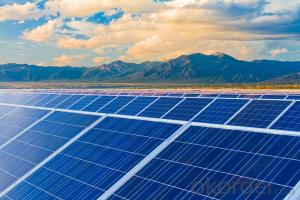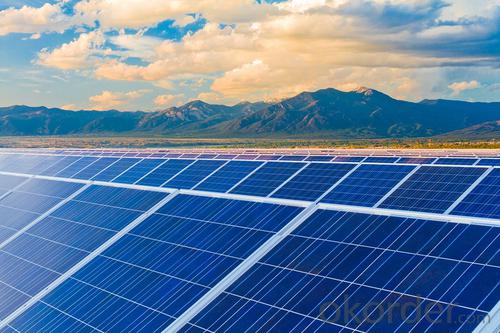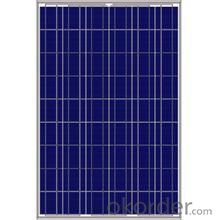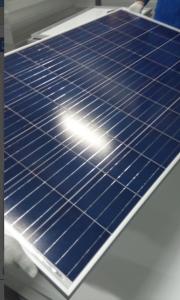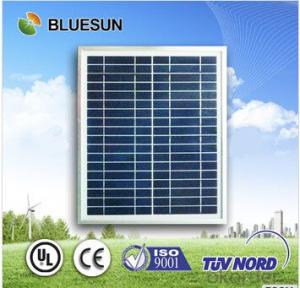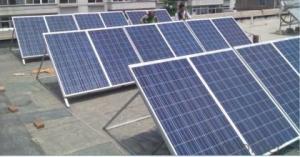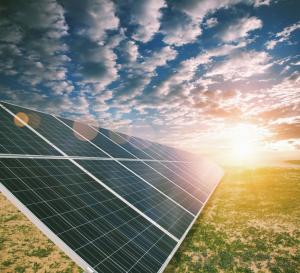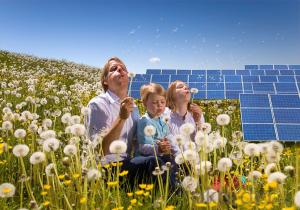Arizona Solar Panels - HBM(240) Polycrystalline Silicon Solar Panels
- Loading Port:
- Tianjin
- Payment Terms:
- TT OR LC
- Min Order Qty:
- 200000 watt
- Supply Capability:
- 20000000 watt/month
OKorder Service Pledge
OKorder Financial Service
You Might Also Like
About us
We have been engaged in PV manufacture and research industry for more than 20 years. We also own powerful technical resources and experienced research team in Hope Group.
We have the first class manufacture equipments and plant.Hope Group are qualified for many international and national authentications of TUV、IEC61215、IEC61730、CE and “ Golden Sun” in China PV industry, meanwhile ISO9001-2008, ISO14000, OHSAS18000, REDP and the certification of Hi-tech enterprise etc./ ( NDRC/GEF/WB-be selected in Chinese renewable energy development projects).
Our national sales service covers seven parts, including northeast, north, east, middle, south, northwest and southwest, international sales covers five continents and over forty countries, including Germany, Italy, Spain, France, America and Brazil etc. There is high efficient , specialized and experienced management team in Hope Group.
Our present annual capacity is 6 million for wafer, 60MWp for solar cells,200MWp for solar modules and one hundred thousand for solar applications. It is expected that the annual capacity of 2012 will be up to 30 million for wafer, 300MWp for solar cells, 1000MW for solar modules and 2 million for solar applications.
Data sheet
| Maximum Power | 240W |
| Efficiency | 0.148 |
| Backsheet | Silver |
| Frame Color | White |
| Manufacture Site | China |
| Frame | Anodized Aluminum Alloy |
| Weight | 19KG |
Solar cell module production process
Line called packaging line components, packaging is the production of solar cells a key step in the packaging process without a good, multi-well battery is also not a good component of production boards. Battery package not only the battery life is guaranteed, but also to enhance the combat strength of the battery. Product quality and high service life is to win can be the key to customer satisfaction, so the quality of components of the package board is very important.
FAQ:
1. How long will my inquiry get response?
Your inquiry related to our products or prices will be replied within 24 hours.
2. Can I get professional service and suggestion?
Well-trained and experienced staffs to answer all your questions in fluent English.
3. Do you accept OEM or customized design?
OEM & ODM, any your customized lightings we can help you to design and put into product.
4. What if I need specific design?
Distributorship are offered for your unique design and some our current models.
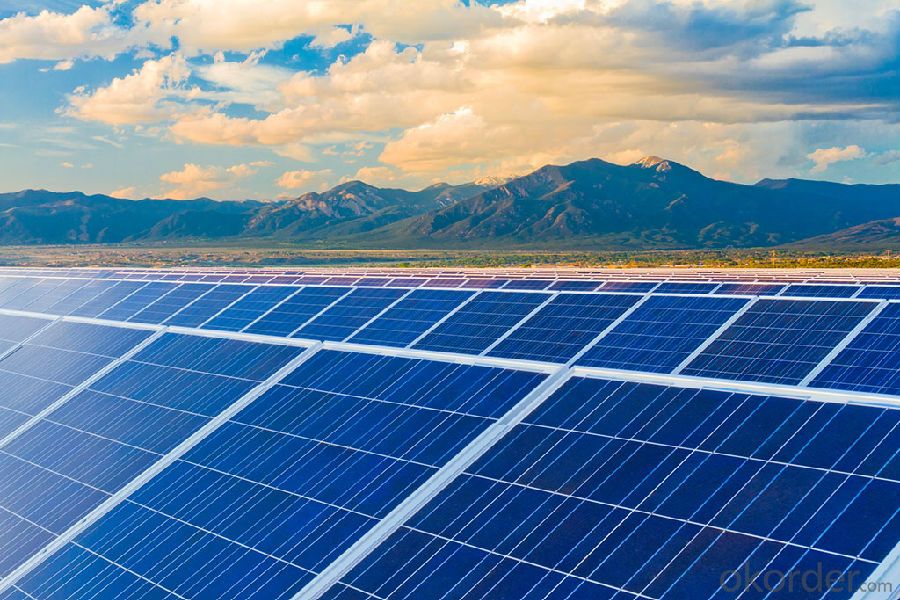
- Q: I have a cabin that is way out in the middle of no where, it would cost 000's of dollars to get power to it. If I have a 8,000 BTU air conditioner that runs on 25 volts and 5 amps (or 875 watts)How many solar panels will I need to run this during the day, plus charge the batteries to run it all night? How many batteries would I need
- OK, in addition to the solar panels, you wil need an inverter (DC to AC; 2V t0 20V) capable of delivering 20A continuously and as much as 40A for the compressor starting surge, and a fairly large battery bank capable of delivering something over 2000 watts continuously (losses in the charging and conversion process) as well as the surge. So, if your actual demand is now calculated around 2000 watt/hour, and you need to both run the unit and charge batteries during the daylight hours - and considering that the ideal charging rate for a lead-acid battery is on the order of 0% of its capacity, you will need a huge reserve on the battery section and a huge excess on the solar section to make up for the 5 hours maximum input. So, the average high-quality deep-discharge battery will do about 400Ah @ 2.6V. Which comes to 5040 watts for one hour. For round figures, it will give you 2000 watts for 2.5 hours. You will need a minimum of eight of them just to make your system run for the 9 hours you are anticipating. Given that you do not want to run the batteries to zero each night, a 50% reserve would be a wise investment - comes to now twelve (2) batteries. Now, you will have to make 2000 watts (to run the unit) and also produce and another 8600 (per hour for five hours) watts to charge the batteries for the next night. Again, for round figures, you will need 0,000 watts of solar power, or seventy (70) panels. At ~0 watts/s.f. (00 watts/meter), that comes to about 000 square feet or 00 square meters. Modern non-crystaline panels may reduce this by 20%, or so but no more than that. You will be charging the batteries at roughly 20% of their discharge capacity - which will pretty much cut their service live in half, or so. As the average deep-discharge battery has about an 8-year life span under ideal conditions (and your situation will be far from ideal) you may expect to replace them every four years or so with good care. Much less with no care.
- Q: I'm thinking of these solar panels that people have on their rooftops in domestic properties. I suppose I mean after how long do you break even with respect to just carrying on without them and getting you electricity from the utilities companies? Or answer in any way you think is pertinent. The more info the better.
- The payback period for a solar PV installation is based upon the cost of the installation compared to the savings achieved. Therefore if you installed a modest set of panels yourself, did not need on site electrical storage and did not have any permitting fees but did enjoy rebates you would be doing better than if the installation costs were high, the solar equipment was expensive, you had to purchase storage batteries, it was costly to maintain and permitting was absurd. On the other side of the equation if your electrical use is high, you perhaps own an EV or you can sell power at a high rate then the costs you will be offsetting will be higher and the payback period will be lower. If your electrical use is minimal, there is no time of use metering available the payback period will be higher. Some of the costs you may be offsetting may not be electrical. If you concurrently purchased an EV then you may be offsetting the cost of gasoline which would be higher than electricity. Overall rebates and incentives play a major role. I have seen payback periods as low as 3 years claimed (commercial installation with special city tax breaks) and as long as over 20. A bell curve would probably find most of the installations in the 7 to 5 year category. A solar thermal installation (for hot water, heating and sometimes AC) is far more efficient and most would be in the range of 2 to 8 years.
- Q: This is the cenario. Your yearly energy use comes by mail and it states that the total amount of energy used your household is 7000kWh.Then you make the decision of switching to get solar panels. The question is what area should your solar panel be given that the average annual length of daylight is 2.0.
- It is not that simple. There are 3 main types of solar cells. Monocrystalline silicon is the most efficient and produces the smallest solar cells, and therefore the smallest panels. Poly-crystalline (or multi-crystalline) silicon produces the next most efficient type of cells and are a popular choice. Amorphous (or thin-film) silicon uses the least amount of silicon and also produces the least efficient solar cells. This means thin film system take up more area than the other two; an important factor to consider in relation to possible future upgrades; i.e. if you'll have enough space left to do so. The North (in the Southern hemisphere) or South (in the Northern hemisphere) facing roof collects the most energy. So this biases the roof area required. Your energy usage can be changed. Hot water (a major energy user) could be better using direct solar heating with peak demand boosting, either from mains or solar. There are other possibilities, either to reduce demand or to provide energy from other sources. Not all sunshine hours are equal. Hours around midday are far more productive than hours later in the day. This must be factored in.
- Q: Do solar panels require regular maintenance?
- Yes, solar panels generally require regular maintenance to ensure optimal performance and longevity. This includes periodic cleaning to remove dirt, debris, and snow, as well as checking for any possible damage or malfunctioning components. Additionally, regular inspections and maintenance by professionals are recommended to identify and address any potential issues or inefficiencies.
- Q: How much is the cost of solar panels including installation for my home so that I can have low monthly power bills.
- How much it costs, and whether it is worth it, really depends on where you live, and how much power you use. A very conservative house like ours, in an ideal area, could get by with a system that costs $5000 to $7500 net after incentives like tax credits. A house that uses a lot of energy, like a massive one with air conditioning, could need an array costing ten times that much. The only way to even get close on an estimate is to call a local solar installer for a quote. If there are no local solar installers, that's a clue that your area may not be very good for solar. Consider solar hot water also. That's generally cheaper and pays back faster than solar electric.
- Q: I have created a solar setup in my shed i have 2x.5w solar panels i am hoping to charge my 55ah car battery how long would it take to charge the battery and how many watts could i used a day
- Quite a while. I am assuming you are using 2 volts as your buss power. The small panels were intended as a float charge for batteries to keep them from discharging over a period of time. 3 Watts means only /4 Amp. Normally when I do slow charging of batteries, I am using right around amp, and that takes about a week to bring up a battery that was discharged past 80 percent capacity. When you factor in losses from corrosion, battery self discharge, and loose connections, you will likely want to add more panels. using your 55Amp/hour battery, a amp charger running constant in a perfect world would take 55 hours. Real world, probably closer to 64 to 72 hours. That for simplicity is 5 Watts constant charge power. Now you are using /5 of that with your current setup. so 5 times longer, whichh puts you in the 300 hour range of real world, or 220 hours of perfect world. This time of year, you may have about 8 hours worth of charging light, which puts you at close to a month. Don't fret. If you are using it for lighting in a shed, Power LEDs and tethering some of the inexpensive LED lights to the 2 volt source will give you plenty of light for a very long time, the panels will help some, but you will likely need to put the batteries on a charger, or you can build a gas powered 2 volt generator easily enough. Charge it up only when needed.
- Q: So you know how the bigger the surface area exposed to the heat radiation means the quicker it'll heat up.Is this what happens with solar panels, they have a large surface area exposing to the sun, so they can get more heat?
- - Radiation from the sun is mostly Ultra- Violet. - There are 2 types of solar panels, Solar thermal collectors and photovoltaic cells. - Put simply, photovoltaic cells take the UV rays and produce electricity. - Solar thermal collectors (which is probabl
- Q: Where in the world are solar panels used. If it is used widespread across a continent just say which continent, other than that, just name the country. So where are solar panels used often?
- Where Are Solar Panels Used
- Q: Can solar panels be installed on mountain huts or lodges?
- Yes, solar panels can be installed on mountain huts or lodges. In fact, mountain huts and lodges are often great locations for solar panel installations due to their high elevation and exposure to sunlight. Solar panels can provide a reliable and sustainable source of electricity in remote mountainous areas, reducing reliance on traditional power sources and minimizing environmental impact.
- Q: i used 734 killowatts of power last month, any idea on how many solar panels i would need. What im looking for is to somehow hook up my central air to solar panels.
- Good answer above me. One other tip, look at your full year's usage. Last month, if it was cold, you probably didn't have your air conditioner on. Our house uses 500-600 kWh a month average, but we have no air conditioner. To generate all of this requires a 3 kW array in our part of California. That's only to give you an idea of what it takes - what you need will be based on how much sun your area gets, and what percentage of power you want to get from the array. If you pay tiered electric rates, it may make sense to displace only part of your electricity with solar. Or it may not make financial sense at all, if you have cheap electricity where you live. To get the best assessment of what kind of system would be appropriate, try to get one or two no-obligation quotes from local companies. You can always turn down the bids, but at least you will have learned what's involved and the approximate cost. If you want to see what we did with our house, please contact me through the email in my profile.
Send your message to us
Arizona Solar Panels - HBM(240) Polycrystalline Silicon Solar Panels
- Loading Port:
- Tianjin
- Payment Terms:
- TT OR LC
- Min Order Qty:
- 200000 watt
- Supply Capability:
- 20000000 watt/month
OKorder Service Pledge
OKorder Financial Service
Similar products
Hot products
Hot Searches
Related keywords
